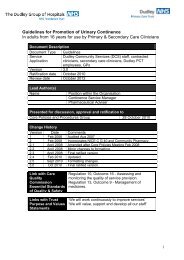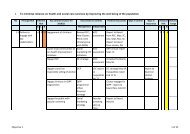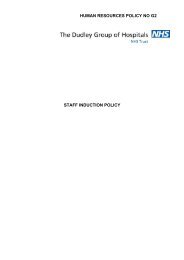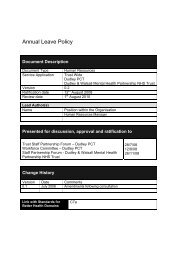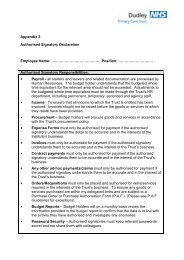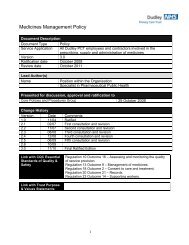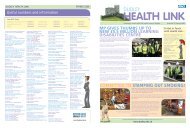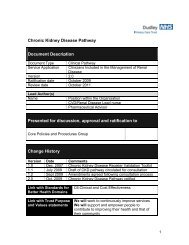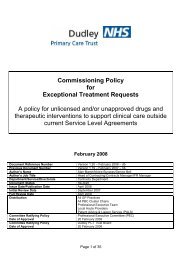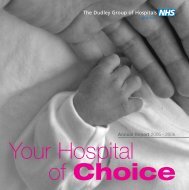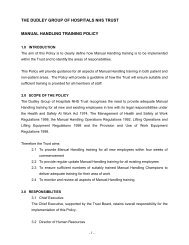Dudley Strategy for Tackling Health Inequalities 2010-15
Dudley Strategy for Tackling Health Inequalities 2010-15
Dudley Strategy for Tackling Health Inequalities 2010-15
- No tags were found...
Create successful ePaper yourself
Turn your PDF publications into a flip-book with our unique Google optimized e-Paper software.
Timely ResponseTimely access to treatment <strong>for</strong> stroke/TIA is dependent on:Public knowledge and awareness of signs, symptoms and speed of responseAmbulance response times and use of validated tools to diagnose stroke/TIAAccess to timely diagnostics and treatmentPublic knowledge and awareness of the symptoms and need to call 999 <strong>for</strong> stroke islow. The national F.A.S.T campaign was introduced in 2009 and evaluation of thiswas carried out in May 2009 by Central Office of In<strong>for</strong>mation on behalf of theDepartment of <strong>Health</strong> (Central Office of In<strong>for</strong>mation, 2009), and has shown somepositive results. Pre and post awareness levels were measured and showedincreases in the need to call 999 from 58% to 70% amongst the general population(52% to 62% amongst the black Caribbean and South Asian populations),awareness of early detection being beneficial from 53% to 66% in the generalpopulation (42% to 51% <strong>for</strong> black Caribbeans and South Asians) and in recognitionof symptoms from 79% to 89% in the general population (67% to 83% <strong>for</strong> blackCaribbeans and South Asians). The lower levels of awareness within key Black andMinority Ethnic communities needs to be addressed since they are at higher risk ofstroke. Lower levels of awareness has also been found <strong>for</strong> the over 65s (The StrokeAssociation, 2007). Local data <strong>for</strong> awareness in <strong>Dudley</strong> is not available; howeverone can assume a similar pattern of awareness. There have been a number of FASTcampaigns in <strong>Dudley</strong> which have been aimed at the general population, particularlyin lower income areas. There are currently no targeted campaigns <strong>for</strong> older people orBME communities.For those who call 999, thrombolysis can be an effective treatment <strong>for</strong> stroke ifdelivered within 3 hours of the on-set of symptoms, thus the patient needs to bediagnosed using FAST, receive a category A ambulance response (8 minuteresponse) with rapid referral to hospital <strong>for</strong> imaging within one hour and subsequentdrug administration. TIA patients that are of a high risk of stroke are also required tobe identified using the ABCD2 score and imaged within 24hours. The NICE qualitystandard measures the proportion of total stroke and TIA screened by ambulancestaff and transferred to a stroke unit within one hour. This is a new metric, and the 4months data <strong>for</strong> <strong>2010</strong> shows a slow increase to 25% in May <strong>2010</strong> against a target of100%.TIA and Stroke Diagnostics and ServicesThe accelerating stroke programme and associated targets was only recentlylaunched in March <strong>2010</strong> hence the metrics, and data collection processes andservice developments are relatively new. Table 3 gives a snapshot of <strong>Dudley</strong>‟sposition against April 2011 targets. Data available in most cases is just 4 months.The table indicates the month 4 position (May).89




